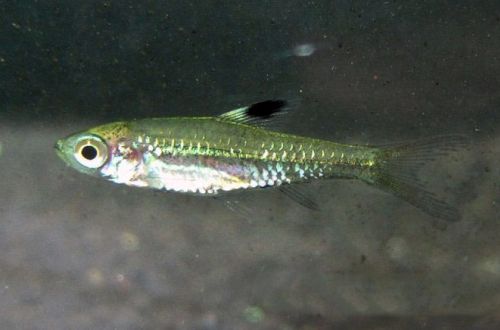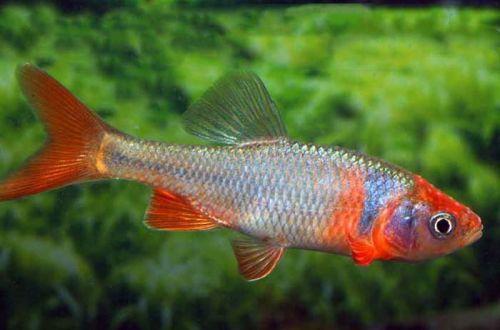
Rasbora Chiya
Rasbora Chiya, scientific name Brevibora cheeya, belongs to the Cyprinidae family. The name of this species comes from the Chinese word “Chee”, which can be roughly translated as “short”, alluding to the relatively small size of this fish. Rarely found in hobby aquariums. Targeted deliveries of this species are not made, and it is sold as by-catch to the Rasbor lot. It has a modest color, if not plain, but at the same time it is easy to maintain and unpretentious, compatible with many other freshwater species.

Contents
Habitat
Originally from Southeast Asia from Peninsular Malaysia, as well as the island of Sumatra and the nearby islet of the Bank. It inhabits bodies of water with stagnant water or a slow current, such as forest streams, swamps. The natural habitat is characterized by brownish acidic water (due to the abundance of dissolved tannins), and the substrates are a mixture of sand and peat.
Brief information:
- The volume of the aquarium – from 70 liters.
- Temperature – 20-25°C
- Value pH — 4.0–7.0
- Water hardness – soft (1-8 dGH)
- Substrate type – any dark
- Lighting – subdued
- Brackish water – no
- Water movement is weak
- The size of the fish is 4–5 cm.
- Food – any food
- Temperament – peaceful
- Keeping in a group of 8-10 individuals
Description
Adult individuals reach a length of about 4–5 cm. Sexual dimorphism is weakly expressed and consists mainly in the size of males and females, the latter are somewhat larger and have a rounded abdomen. The coloration is gray with transparent fins and a silvery belly.
Food
In nature, they feed on small invertebrates (insects, worms, crustaceans) and other zooplankton. In a home aquarium, it will accept most popular foods of a suitable size. The daily diet may consist of dry flakes or granules combined with live or frozen bloodworms, daphnia, brine shrimp.
Maintenance and care, arrangement of the aquarium
The optimal size of the aquarium for a small flock of quiet fish starts at 70 liters. The choice of design is not as critical as the quality of the water. However, it is recommended to use dark soil and a large number of aquatic shade-loving plants. Having a few snags will not be superfluous. The lighting is subdued.
To simulate the conditions of a natural habitat, a few dried leaves of trees, such as oak, are added to the aquarium. In the process of decomposition, the leaves give the water a brownish tint and saturate it with tannins, which have a positive effect on the overall tone of the fish. For more information, see the article “Which tree leaves can be used in an aquarium.”
Successful keeping of Rasbora Chiya depends on providing stable water conditions with suitable hydrochemical values. To do this, it is enough to carry out several standard procedures: regular cleaning of the aquarium from organic waste (food leftovers, excrement, etc.), weekly replacement of part of the water with fresh water, as well as mandatory equipment maintenance.
Behavior and Compatibility
A peaceful accommodating fish that will be a great addition to a community of similar freshwater species. Keeping flocks of at least 8-10 individuals, with a smaller number they can become overly shy and will spend a lot of time in the corner of the aquarium or some kind of shelter.
Breeding / breeding
At the time of writing, there is no reliable information about the successful breeding of Rasbor Chiya. However, the lack of information may be due to the fact that this species is not so popular in the aquarium hobby, and the breeding process should be identical to other Rasboras.
Fish diseases
Hardy and unpretentious fish. If kept in suitable conditions, then health problems do not arise. Diseases occur in case of injury, contact with already sick fish or significant deterioration of the habitat (dirty aquarium, poor food, etc.). Read more about symptoms and treatments in the Aquarium Fish Diseases section.




